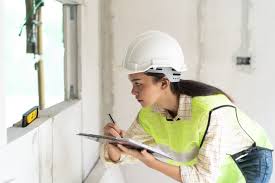Mold testing is a crucial step for homeowners in Los Angeles, especially in a climate that can foster mold growth. Understanding what to expect during the process and how to prepare can help ensure a smooth and effective mold assessment. This article provides a detailed overview of mold testing, its importance, and preparation tips.
Understanding Mold Testing
Mold testing involves a professional assessment to identify the presence of mold spores in the air and on surfaces. This process is essential for determining the extent of mold contamination in your home. In Los Angeles, Los Angeles mold testing where humidity and temperature fluctuations can encourage mold growth, regular testing can help maintain a healthy living environment.
Types of Mold Testing
There are several methods of mold testing, including:
- Air Sampling: This involves collecting air samples from various areas of your home to measure the concentration of mold spores.
- Surface Sampling: Technicians may take samples from visible mold or suspect surfaces using swabs or tape.
- Bulk Sampling: This method involves collecting materials from your home (like drywall or carpet) for laboratory analysis.
Each method has its purpose and can provide valuable information about the presence and type of mold in your home.
The Importance of Mold Testing
Mold testing is vital for several reasons:
- Health Concerns: Mold can cause various health issues, including respiratory problems and allergic reactions. Testing helps identify potential risks.
- Property Damage: Mold can weaken structures and damage materials. Early detection through testing can prevent more severe damage and costly repairs.
- Peace of Mind: Knowing the mold status in your home provides reassurance and allows homeowners to take appropriate action if needed.
What to Expect During Mold Testing
Initial Assessment
When you schedule a mold testing appointment, the process typically begins with an initial assessment. A certified mold inspector will arrive at your home to evaluate the situation. They will ask about any visible mold, water damage, and your health concerns.
Testing Process
After the assessment, the inspector will conduct various tests based on their findings. This may include air sampling, surface sampling, or bulk sampling. The inspector will explain each step and why it’s necessary.
Lab Analysis
Once samples are collected, they will be sent to a laboratory for analysis. The lab will identify the type and concentration of mold present. This process usually takes a few days, and the inspector will provide you with a detailed report of the findings.
How to Prepare for Mold Testing
Preparation can help ensure the testing process goes smoothly. Here are some steps to take before the inspection:
1. Clear the Area
Remove any furniture, decorations, or personal items from the testing areas. This not only makes it easier for the inspector to access surfaces but also helps prevent contamination of your belongings.
2. Document Existing Issues
Take notes or photos of any visible mold or water damage in your home. This information can help the inspector understand the extent of the problem and guide their testing process.
3. Maintain Normal Conditions
Before testing, try to maintain normal humidity and temperature levels in your home. Running HVAC systems and using dehumidifiers can help ensure accurate air sampling results.
4. Prepare Questions
Think of any questions or concerns you may have about mold testing. Discussing these with the inspector can provide clarity and help you understand the process better.
After the Testing
Once you receive the lab results, the inspector will review them with you. They will explain the findings and recommend any necessary remediation steps if mold is detected. It’s essential to take these recommendations seriously to protect your health and property.
Follow-Up Actions
If mold is found, you may need to hire a mold remediation specialist to address the issue. Ensure the contractor is certified and experienced in mold removal to effectively manage the problem.
Conclusion
Mold testing is an essential process for maintaining a healthy home environment in Los Angeles. By understanding what to expect and how to prepare, homeowners can navigate the testing process confidently. Regular mold testing not only safeguards your health but also protects your property from potential damage. Don’t wait for visible signs of mold—schedule a testing appointment today to ensure your home remains safe and healthy.


